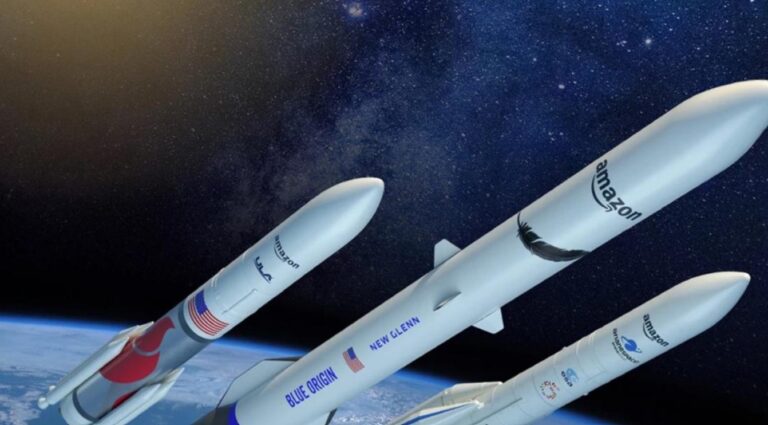It’s payback for Jeff Bezos and his Blue Origin. On 19 May, NASA announced that Blue Origin is the second company selected to develop a human landing system for the agency’s Artemis V mission to the moon in 2029.
In 2021, the US space agency had chosen Elon Musk’s SpaceX to conduct the first Artemis moon landing missions within the next decade, rejecting a rival bid from the Blue Origin-led team. Specifically, Nasa had awarded SpaceX a $3 billion contract in 2021 to land astronauts on the Moon for the first time since the last Apollo mission in 1972.
After that, Nasa opened another competition in search of a second lunar lander to serve as SpaceX’s backup.
The joint lunar lander proposal, led by Blue Origin, marks the second attempt by the billionaire Amazon founder’s companies to win a coveted lander contract as Nasa looks for more options to bring astronauts to the lunar surface.
Table of Contents
The NASA contract awarded to Blue Origin
The Blue Origin contract is worth about $3.4 billion, revealed Nasa exploration chief Jim Free. With Blue Origin contributing privately “well north” of that amount, added John Couluris, head of Blue Origin’s lunar lander. As Cnbc reports, the investment for Blue Origin’s project is more than $7 billion“.
Specifically, Blue Origin will design, develop, test, and verify its Blue Moon lander to meet Nasa’s human landing system requirements for recurring astronaut expeditions to the lunar surface. Thus including docking with Gateway, a space station where the crew moves into lunar orbit, Nasa explained in a note.
In addition to design and development work, the contract includes an unmanned demonstration mission to the lunar surface before a manned demonstration on the Artemis V mission in 2029.
“Honoured to be on this journey with Nasa to land astronauts on the Moon, this time to stay,” billionaire Bezos said in a tweet after the announcement.
Bezos teams up with Boeing for Nasa contract
After that, Nasa decided to launch a competition for a second lander, to be used when the Artemis programme is well underway.
The addition of another human landing system partner to Nasa’s Artemis programme will increase competition, reduce costs for taxpayers, support a regular cadence of lunar landings, further invest in the lunar economy.
And help Nasa achieve its goals on and around the Moon in preparation for future astronaut missions to Mars, the agency explained.
And for this new tender Blue Origin has teamed up with Lockheed Martin, Draper, Boeing, Astrobotic and Honeybee Robotics.
Last December, Blue Origin had revealed its team’s race in a short statement published on its website, stating that ‘in partnership with NASA, this team will achieve a sustained presence on the Moon’.
Read also: From spaceships to habitation: NASA’s groundbreaking technologies for sending people to Mars












